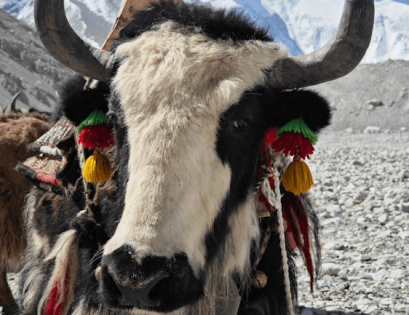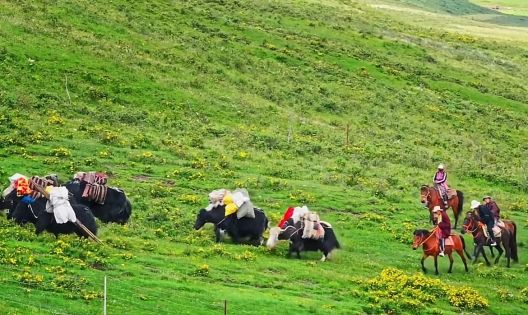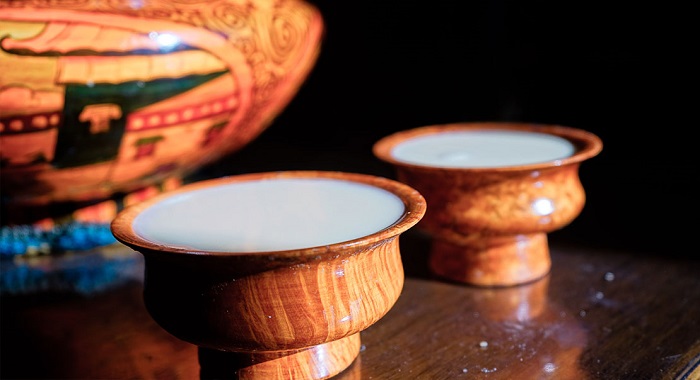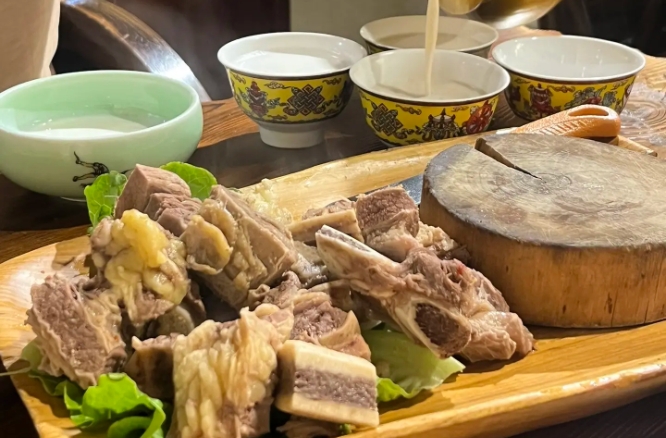When you step onto the Tibetan Plateau, it doesn’t take long to notice the presence of yaks. These shaggy, strong animals graze across the endless grasslands, carry loads over mountain passes, and even appear in Tibetan art and festivals. For Tibetans, the yak is not just livestock—it is a symbol of survival, prosperity, and culture.
Yaks: Masters of the Plateau
At an average altitude of 4,000 meters, Tibet is one of the harshest environments on earth. The cold winds, thin air, and freezing winters make farming difficult. Yaks, however, are perfectly adapted to these conditions. Their thick coats insulate against extreme cold, while their strong lungs allow them to thrive in oxygen-poor environments. This makes them indispensable to Tibetan nomads who rely on yaks as both companions and providers.

Yaks in Tibet
Nourishment from Yaks: The Taste of Tibet
Tibetan cuisine would be unimaginable without yaks.
-
Milk and Dairy: Yak milk is rich and creamy, forming the base of butter, yogurt, and cheese. Yak butter tea is a daily drink in every Tibetan home, providing energy and warmth.
-
Meat: Yak meat is lean yet high in protein, an essential part of the diet in high-altitude regions. It is eaten fresh, dried, or cooked into hearty stews.
-
By-products: Even yak bones and hides are used—bones for soup stock or crafts, hides for clothing and traditional boots.
Yaks in Clothing, Shelter, and Tools
Beyond food, yaks provide warmth and shelter. Their wool is woven into blankets, tents, and winter clothing, keeping families safe from the plateau’s bitter cold. Yak hair ropes and sacks remain common in nomadic households. Even dung is dried and used as fuel, solving the challenge of scarce firewood on the plateau.
Carriers of Trade and Travel
For centuries, yaks were the backbone of Tibetan trade. They carried salt, tea, and wool across ancient caravan routes that connected Tibet with Nepal, Bhutan, and India. Their sure-footedness on icy trails made them reliable even in the highest mountain passes. Today, yaks continue to serve as pack animals for treks to Everest Base Camp and remote monasteries.

Spiritual and Cultural Symbolism
In Tibetan Buddhism, the yak represents strength, abundance, and harmony with nature. Many festivals feature yak races, yak dances, and yak-wrestling events, celebrating the bond between people and animals. During Losar (Tibetan New Year), yak butter sculptures decorate monasteries and homes, combining artistry with spirituality.
Economic Value and Tourism Appeal
Yaks are also central to Tibet’s rural economy. Beyond subsistence use, yak products—such as butter, cheese, and wool—are sold in markets, supporting family incomes. For travelers, seeing yak caravans or tasting yak butter tea is a highlight of any Tibetan journey. Some guesthouses even offer yak-riding experiences, allowing visitors to connect with local traditions.
Sustainability and Future Role
As Tibet modernizes, yaks remain vital to the balance between people and nature. Nomads practice rotational grazing to keep grasslands healthy, while yak-based products are gaining popularity in eco-tourism markets. Far from being replaced, yaks continue to represent the sustainable lifestyle of the Tibetan Plateau.
Conclusion
From food and clothing to festivals and faith, yaks are at the heart of Tibetan culture. They are more than livestock—they are providers, companions, and symbols of resilience. For visitors to Tibet, learning about the role of yaks offers a deeper appreciation of the plateau’s traditions and the resourcefulness of its people.














